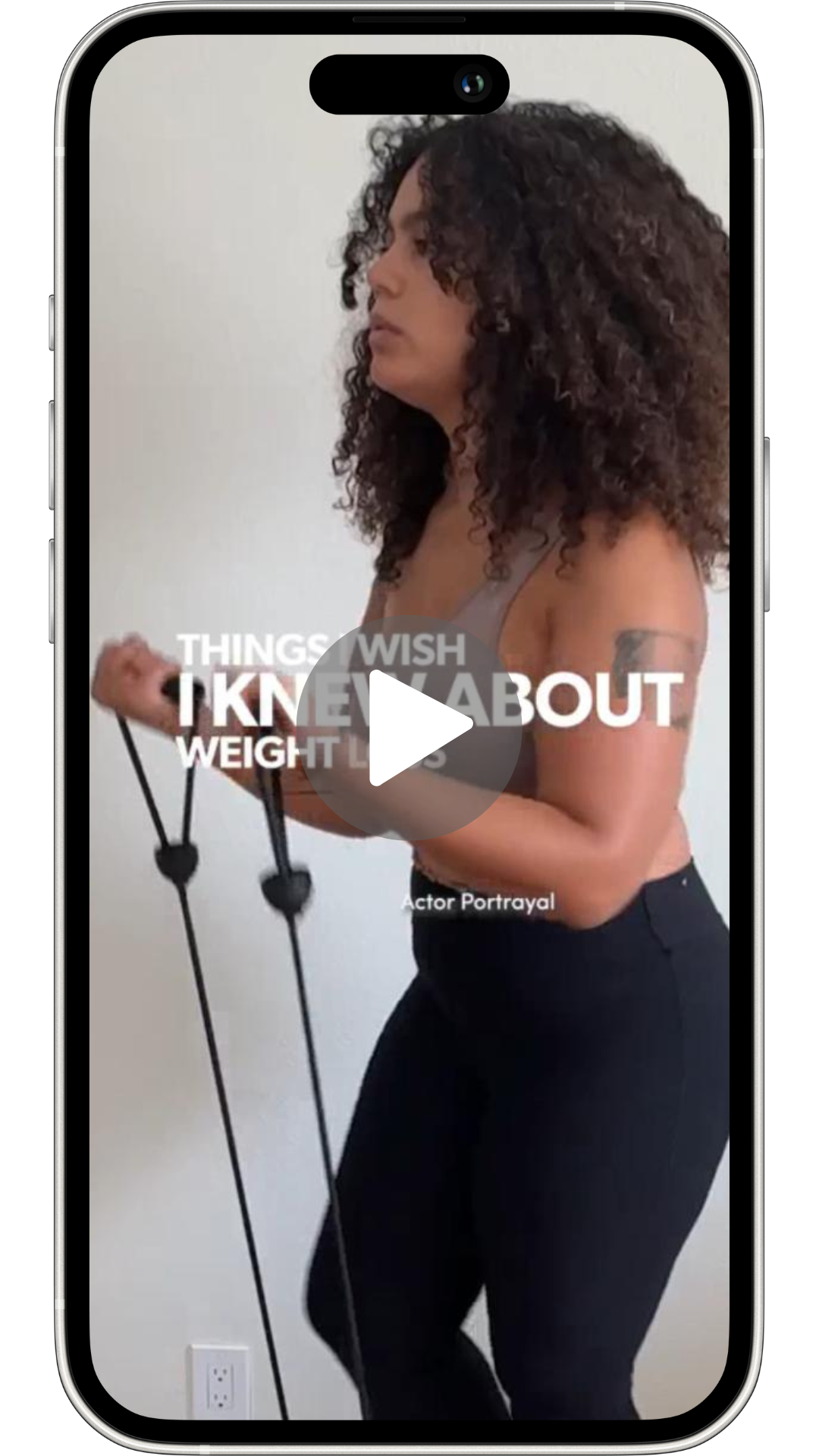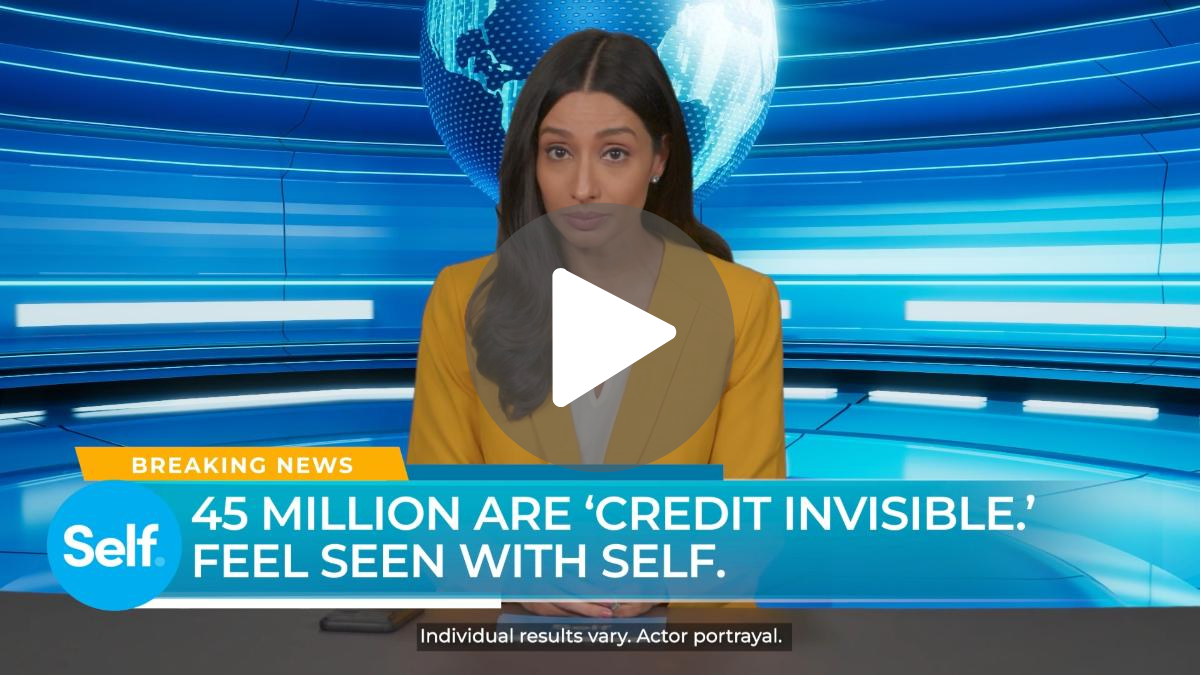Decoding Creative Diversity
Why Ad Variety Equals Performance
(And How To Harness It)
We scrutinized 80,000 ads and over $27M in spend to prove creative diversity improves performance, then built two proprietary tools to help you quantify, benchmark, and systematically elevate your creative mix.

What is creative diversity and why does it matter?
Creative Diversity
kree·AY·tiv di·VUR·suh·tee
(Noun)
The strategic use of varied ad formats, messaging, visual styles, and talent to optimize advertising relevance, reduce audience fatigue, and enhance campaign performance.
Performance marketing has entered the era of volume.
The algorithms powering the largest digital and social advertising platforms are hungry beasts—devouring data and thriving on more content, more engagement, more clicks. Relentless experimentation machines, they test, learn, and optimize in real time, growing smarter with every fresh asset.
Meanwhile, the dials performance marketers once controlled now belong to the machines. Targeting, segmentation, and bidding are now largely automated.
There’s only one lever left in your control…
Creative.
Ad creative is the fuel that powers the machine—and the machine needs plenty of it. But while performance marketing may have entered the era of volume, volume alone isn’t enough.
More ads alone ≠ better performance.
Many marketers interpret the call for “more creative” as a call for more volume. And sure, quantity helps. More ads in rotation creates more chances to find a winner.
But that’s only half the equation. Algorithms don’t reward sheer output—they reward relevance.
And relevance comes from variety.
Diverse creative expands reach by speaking to more people in more ways. It gives algorithms more distinct signals to match with more audience segments. It mitigates fatigue, boosts engagement, and improves performance at every stage of the funnel.
You need creative diversity
When ads fatigue faster than they should, CPAs spike, and nothing new seems to hit, more often than not the root cause isn’t quality; it’s sameness.
Deploying a creative strategy that emphasizes fresh, varied ads does three critical things:
- Creative diversification lowers costs. A Meta research report found that using 3–10 creatives, versus just one, can cut CPA by 46%. Another study found two visually distinct creatives lowered CPA by 4.6%. Our own internal analysis confirms it: across 15,000+ ads, campaigns using multiple formats consistently showed higher click-through rates and lower costs.
- Creative diversification reduces ad fatigue. One analysis of 8.7K ads revealed performance drops by ~30% without frequent creative refreshes, but multiple variants significantly reduce this decline. Our analysis of 1.5M+ ads revealed ads require 30–45 days for performance metrics to stabilize. Diverse ads extend that lifecycle, giving winners more time to scale.
- Creative diversification increases reach and relevance. Diversified creatives give algorithms more to work with, making it easier to match the right people with the most relevant ad. This has shown lower CPA by up to 32% and result in 9% higher incremental reach.
The bottom line? Creative diversity isn’t a nice-to-have. It’s a direct lever on performance. The more varied your creative inputs, the more efficiently platforms can find the right people at the right time—and do it cheaper, faster, and at a greater scale.
This report will show you how to improve creative diversity.
Until now, creative diversity has been notoriously difficult to measure—let alone optimize.
This report introduces two proprietary frameworks that make the abstract measurable and actionable:
CReative diversity map
An intuitive heat map to identify strategic gaps in your ad mix.
Creative Diversity Score
A definitive scoring system to benchmark and improve your creative strategy.
Methodology
To quantify the impact of creative diversity on performance marketing, we analyzed:
2 Years
Of data across 60,463 ads totalling $27.4M in spend to determine when performance peaks and plateaus.
17,000+ Ads
From 599 campaigns to assess how theme and format variety affect performance.
465 ads
Manually analyzed from three advertisers (Hims, AG1, Lemonade) to understand how real brands execute creative diversity at scale.
This report focuses on social media advertising channels—specifically Facebook, Instagram, TikTok, Snapchat, LinkedIn, and similar platforms.
Dimensions of Creative Diversity
Creative diversity can feel squishy. More art than science. What, exactly, makes one ad truly different from another? And how do you know when your library has enough variety to move the numbers?
We tackled those questions by reverse-engineering diversity the way musicians dissect a song into melody, rhythm, and tempo. Break the art into its building blocks and it becomes measurable. We found six core dimensions that determine whether your creative mix is truly varied—or just louder.
Creative Themes
& Concepts
Variety of themes and concepts in your ads is the heartbeat of creative diversity.
- Theme = idea: The overarching narrative or strategic angle.
- Concept = execution: How that idea shows up in the ad.
For example, an ad where the theme is “aspirational lifestyle” and the concept is a day-in-the-life video showing the product used in a daily routine.
Brands win when they consistently explore new themes and concepts, so every ad feels new and relevant. To determine variety in this dimension, map each asset to one of the following broad categories.
Product-Centric
Highlights the product itself, focusing on features, benefits, and use cases (hands-on product demos, close-up feature showcases, or comparison videos).
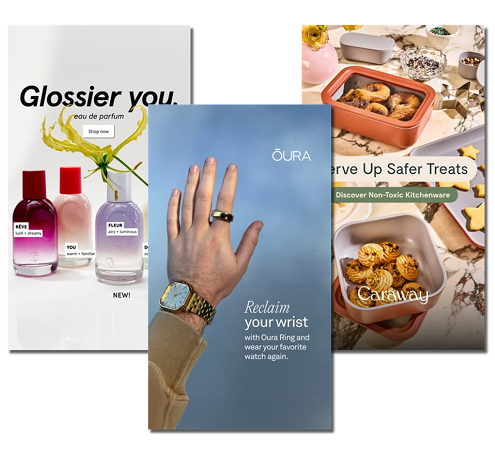
Lifestyle & Aspirational
Positions the product within an ideal lifestyle, evoking emotions and aspirations (day-in-the-life storytelling, cinematic brand films, or aspirational creator collaborations).
Testimonial & Social Proof
Builds trust through customer experiences, expert endorsements, or user-generated content (before-and-after stories, unboxing videos, or expert reviews).
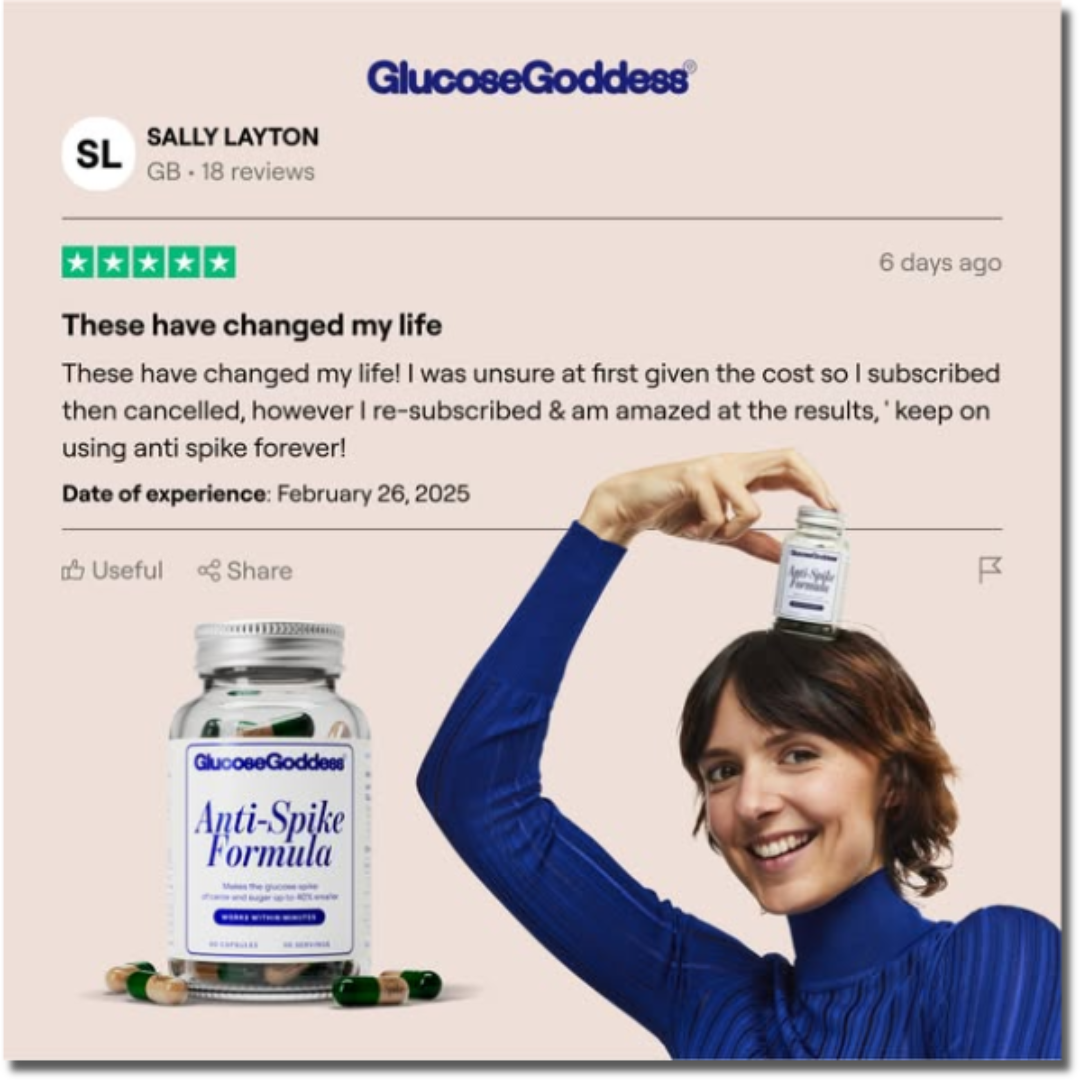
Humor & Entertainment
Uses comedy, satire, or engaging storytelling to capture attention (parody ads, meme-based content, or exaggerated situational humor).
Brand Story & Mission-Driven
Focuses on the company’s values, mission, or broader impact (founder stories, behind-the-scenes brand narratives, and production breakdowns or warehouse tours).
Format & Production Style
Varied media types and visual formats are the second pillar of creative diversity. They matter because they:
- Match context. Users consume content differently, the right format boosts response.
- Feed the algo. Distinct assets give platforms richer signals to surface the best ad for each viewer.
- Multiply tests. One idea can spin into statics, carousels, shorts, and more—accelerating learnings.
Formats are endless, but we distill them into six practical buckets.
Static Image
Single-frame creative—photo, infographic, or meme—built for instant comprehension. Ideal for rapid-fire testing of hooks, headlines, and offers; production cost is near-zero and localization is easy.
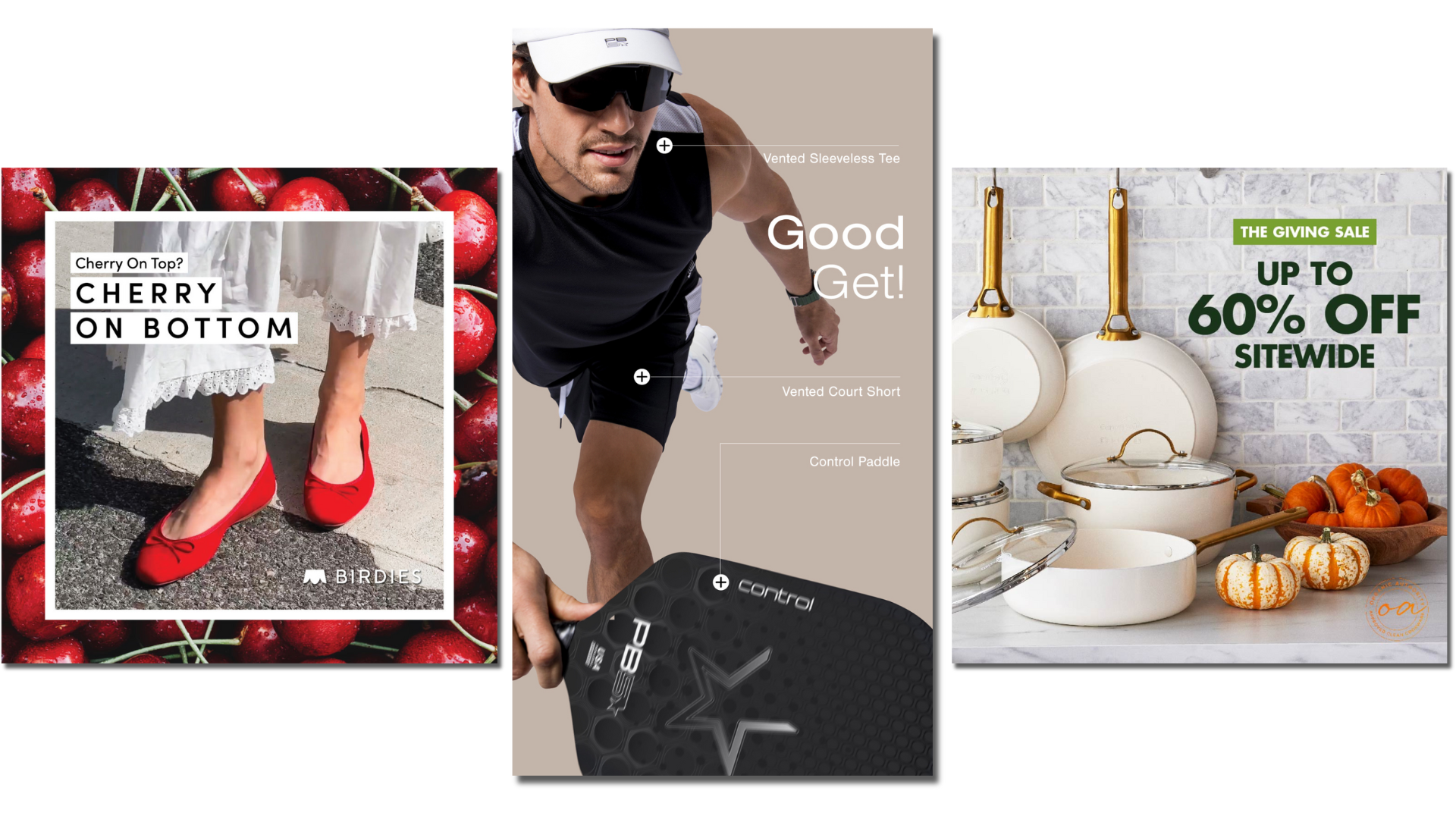
Carousel
Swipeable series of 2–10 panels. Great for step-by-step storytelling, multi-product showcases, or feature deep dives. Higher engagement and dwell time than statics; doubles as a low-lift video substitute.
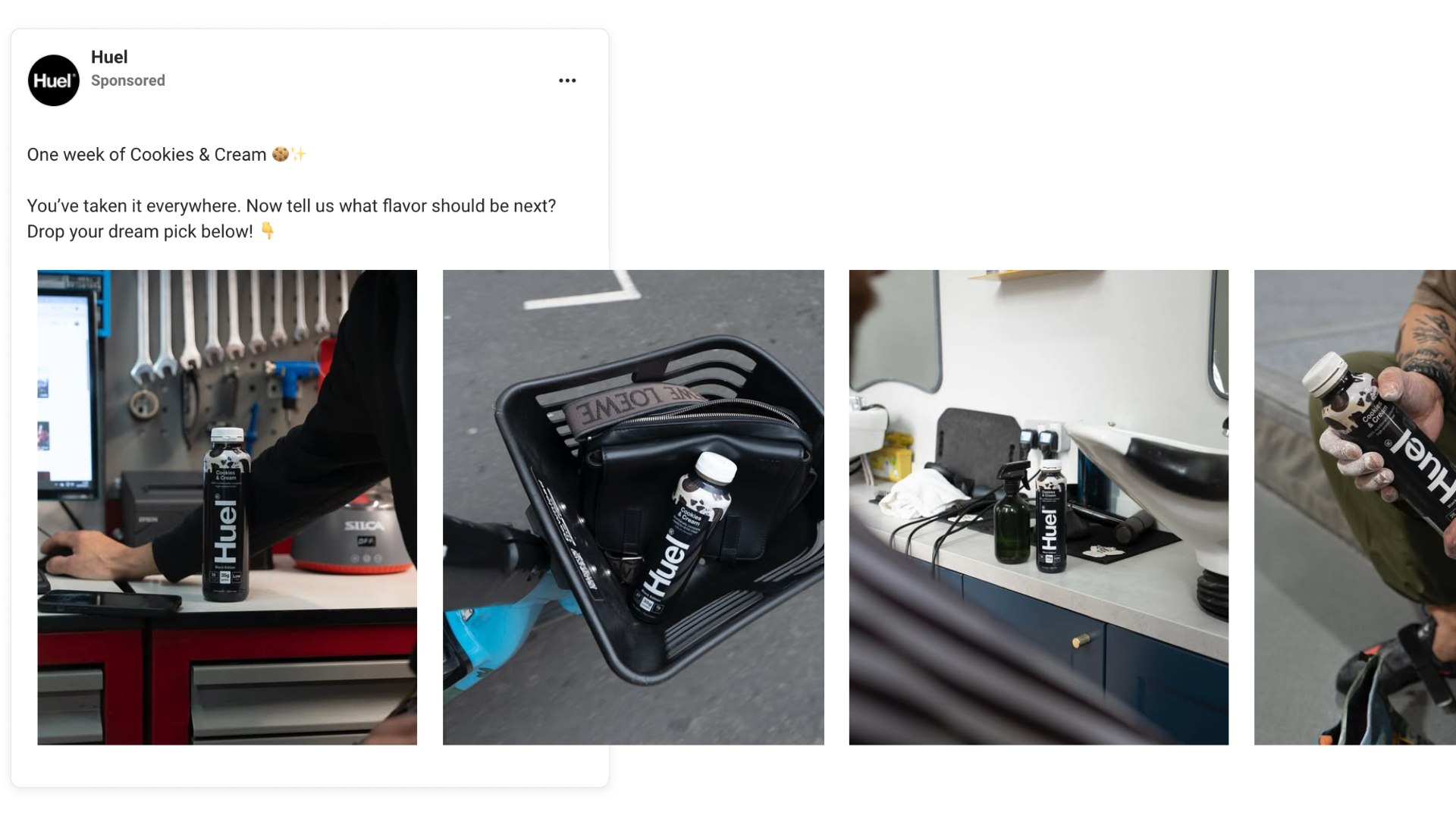
Animation & Motion Graphics
Visually engaging 2D/3D, stop-motion, or AI-generated creative that simplifies complex concepts. Loop-friendly, thumb-stopping, and highly repurposable across formats.
Alternative Formats
Require audience interaction—shoppable ads, dynamic personalization, tailored content, polls, quizzes, and gamified experiences. Enhances user involvement, leading to deeper engagement and improved conversion rates.
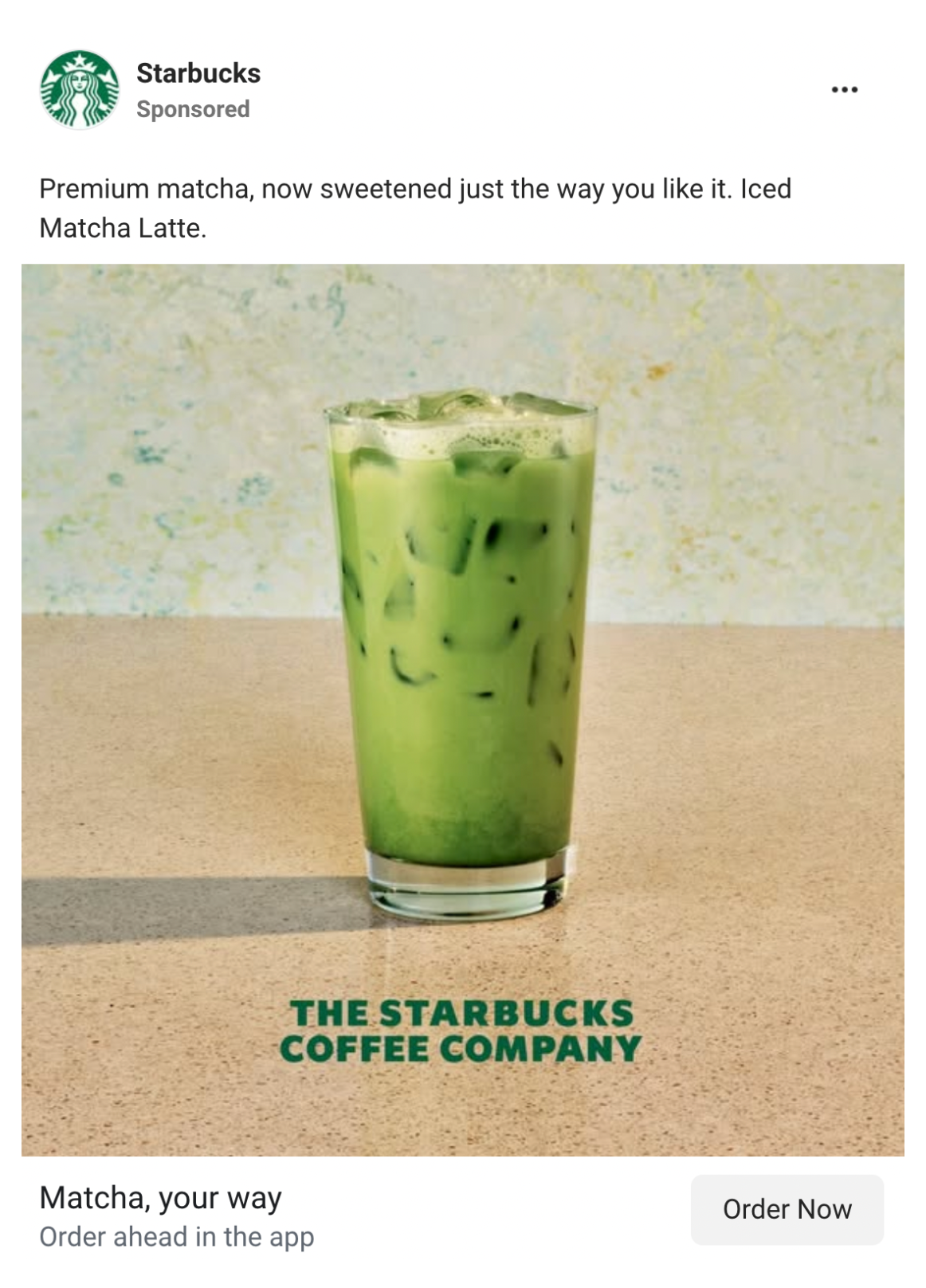
Audience & Funnel Strategy
Creative variety isn’t just determined by an ad’s content or format—it’s also about how it speaks to different audiences based on their unique relationship with your brand.
Tailoring creative assets to specific audience segments, their position in the marketing funnel, and your campaign objectives ensures the right ads resonate with the right audience.

Audience Diversity
Crafting tailored ads for distinct audience groups: cold prospects, warm retargeting segments, loyal customers, lookalikes, and geographic targets.
Precise audience matching enhances relevance and performance.
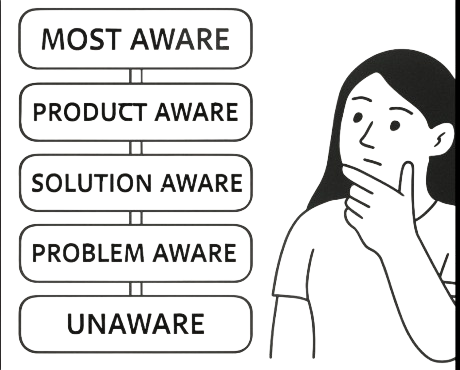
Funnel Stage Alignment
Strategically designing creative concepts to align with the stages of customer awareness, as made famous by Eugene Schwartz in Breakthrough Advertising: unaware, problem aware, solution aware, product aware, and most aware. Effective alignment ensures incremental progression towards desired outcomes.
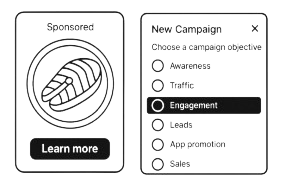
Campaign Objective
Creative assets specifically aligned with a campaign’s objective, such as awareness, traffic, engagement, leads, app promotion, or sales. This allows for more precise measurement and better optimization, and also ensures ads directly support your strategic goals.
Platform & Placement
In this regard, digital advertising is a lot like investing: it pays to be diversified. While it’s tempting to be everywhere at once, or default to the largest platforms, smart marketers understand where their audience is and meets them there.
Deploying ads in the right channels that make sense for your product or service (and where you know your ideal buyers are likely to be) is key to both smart performance marketing and creative diversity.
Platform
Diversifying across platforms like Meta, TikTok, LinkedIn, and YouTube, to name a few, lets you meet your audience precisely where they spend their time online.
Placement
Going one level deeper, ads that are optimized for specific placements within channels (in-feed, stories, Reels, in-stream video, etc.) ensure content resonates within that context and maximizes performance.
Talent & Representation
Featuring a wide range of people is critical to creative diversity, and therefore performance, because it helps your audience see themselves in your ads. Variety in this dimension helps establish authenticity, create meaningful connections, and build trust in niche communities.
Talent Types
These are simply the people featured in ads. Creators, actors, experts, influencers, customers—variety among the voices promoting a brand expands overall reach and relevance.
Demographic Representation
People resonate most deeply with content (ads included) that reflects who they are. Featuring diverse representation across demographics like age, gender, ethnicity, and language signals clearly to audiences: this is for you. By mirroring the identities of the people brands aim to reach, ads become more relatable, inclusive, and effective.

Creative Refresh Rate
The final dimension of creative diversity refers to how frequently new ads are swapped in and fatigued ones retired. An effective refresh strategy involves maintaining a healthy pipeline of new creative while also giving ads time to shine.
Our analysis of 1,500+ ads showed performance stabilized 30–45 days after launch. The trick is finding the balance between introducing new creative, scaling high-performers, and pausing ads showing signs of fatigue.

Refresh Frequency
The cadence at which new creative assets or updated variations are introduced. This ranges from daily to weekly updates for aggressive testing, to monthly or quarterly cycles for more stable campaigns.

Type of Refresh
The scope and scale of creative changes. These changes could be minor tweaks, major iterations of existing ads, or entirely new creative concepts.
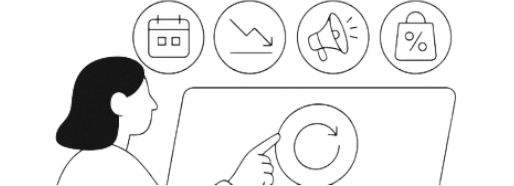
Trigger Mechanism
What prompts creative updates. Triggers can include scheduled rotations, fluctuations in performance signals like CPA or CTR drops, or significant events like product launches, sales events, or holidays.

Volume of New Creative per Cycle
The number of new or significantly updated creative assets introduced per refresh cycle. Conservative approaches may introduce 1–2 new concepts per cycle, while aggressive, high-velocity strategies can mean 10+ new ads rotated in.
Measuring Creative Diversity
Creative diversity is just theory until you can quantify, visualize, and benchmark it. This section introduces two practical tools that turn gut-feel into hard numbers—highlighting gaps, setting benchmarks, and showing exactly where to level-up your ad mix. Use them to know where you’re strong, where you’re thin, and what to build next.
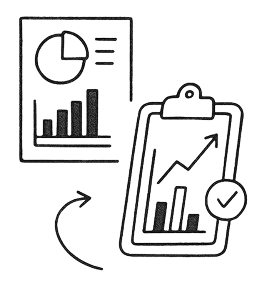
CReative map
This intuitive visual tool reveals the strengths and critical gaps in your creative strategy.
By mapping ads across two key dimensions, it delivers an instant snapshot of creative diversity, providing both a clear snapshot of the current state and a path toward smarter creative investments.
Creative Diversity Score
This a single, clear metric that reflects the breadth and balance of your creative strategy.
Unlike one-dimensional metrics, it evaluates multiple key dimensions to precisely measure variety within a creative portfolio. It not only benchmarks creative mix against best practices, but also acts as a diagnostic tool to highlight strategic gaps and inform smarter creative decisions to combat ad fatigue and drive sustainable performance.
Calculate your Creative Diversity Score
Ready to see how you stack up?
Use the calculator below to calculate your Creative Diversity Score and discover where your creative mix stands and where there’s room to grow. Simply select the option that best describes your level of proficiency across the six dimensions of creative diversity and your score will be automatically calculated.
Note: Some dimensions are weighted more heavily than others due to their outsized impact on overall creative diversity and strategic effectiveness. Weights are noted in each dimension.
Interpreting Your CDI Score
81–100: Excellent Creative Diversity
All dimensions are robust and well-balanced, reflecting a highly diversified and effective creative strategy.
61–80: High Creative Diversity
Most dimensions are performing well. Minor gaps might exist, but overall, the creative strategy is strong and balanced.
41–60: Moderate Creative Diversity
Reflects a mixed performance. While some dimensions may be solid, a few lagging areas are pulling the score down. There’s clear room for improvement to achieve a more balanced approach.
21–40: Low Creative Diversity
Shows that several key areas are lagging. One or more weak dimensions may be dragging down the overall score, signaling the need for focused improvements.
0–20: Very Low Creative Diversity
Indicates that most or all dimensions are significantly underperforming. Immediate improvements are needed across the board.
💡 The Impact of a Lagging Dimension
As the Creative Diversity Score is the weighted average of six dimensions, a single low score can significantly impact the overall score. One lagging area can act as a bottleneck that limits the potential of an otherwise strong creative strategy.
For example, if the Format & Production Style scored considerably lower than the others, it will pull the overall average (and also the final score) down. This underscores the importance of not just excelling in one or two areas, but maintaining consistently high performance across all dimensions.
Brand Analysis #1: Hims
Hims is a modern telehealth company providing accessible, personalized care for men across weight loss, hair loss, sexual health, and mental health.
With digital-first treatments and a mission to empower men through better health, it’s a consumer-centric brand with a sophisticated performance marketing function.
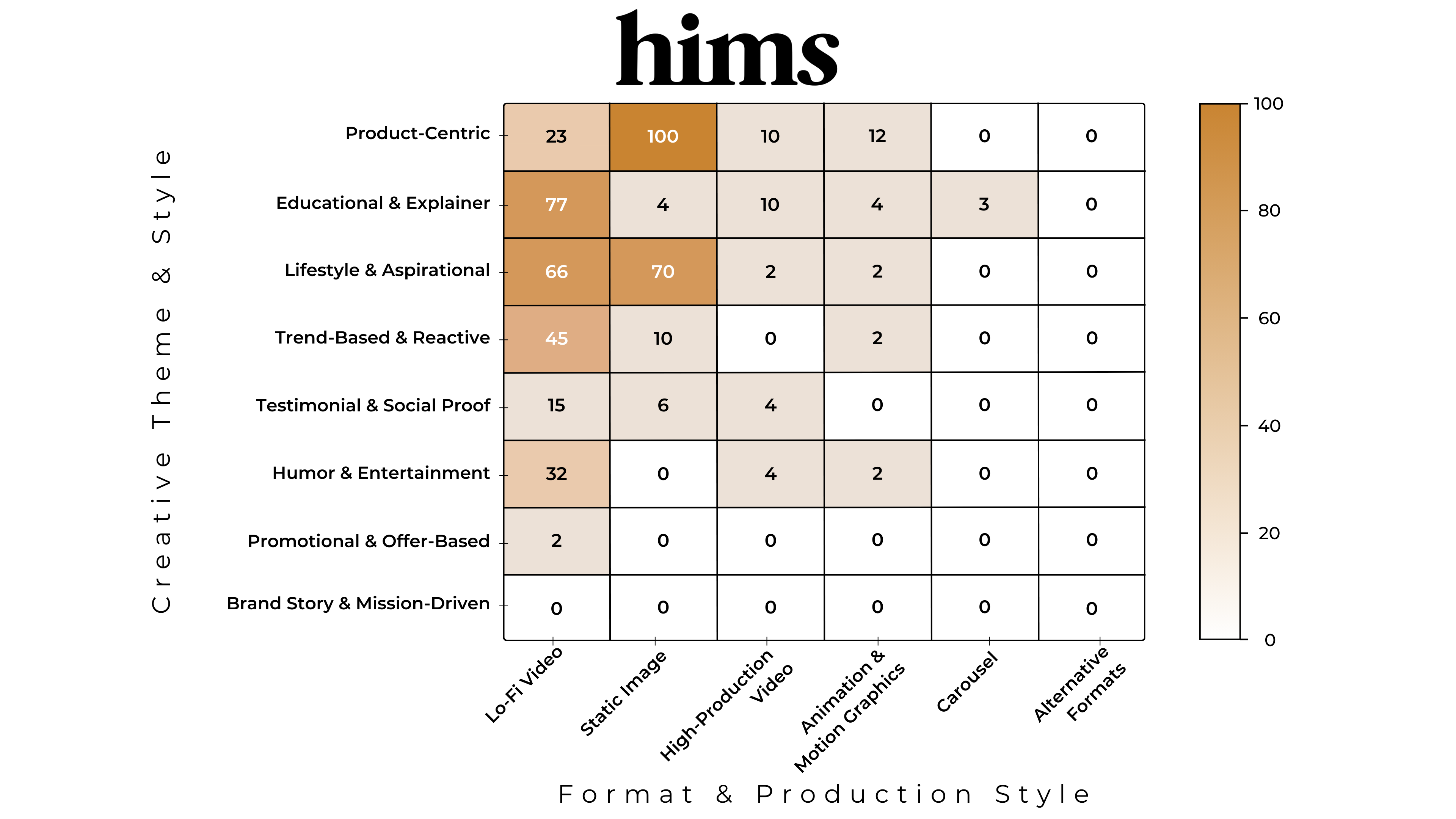
What’s Working
It’s clear from their ad portfolio on the Meta Ads Library that Hims runs a sophisticated and disciplined testing framework. Every concept includes micro-variants (new intros, different talent, voiceovers, text overlays) so they can isolate a winner fast and scale it.
Messaging angles are broad and talent is intentionally diverse. This variety not only appeals to specific audience segments, it acts as a precise targeting mechanism. Instead of manually targeting men in their 50s, they’ll run ads featuring someone saying “I’m a 52-year-old man…” The creative does the targeting.
Execution sticks to direct-response fundamentals. Videos hit the proven cadence—scroll-stopper hook, clear benefit proof, decisive CTA—while statics spotlight a single payoff without clutter. Net result: a well-balanced library of themes, formats, and styles with only minor gaps.
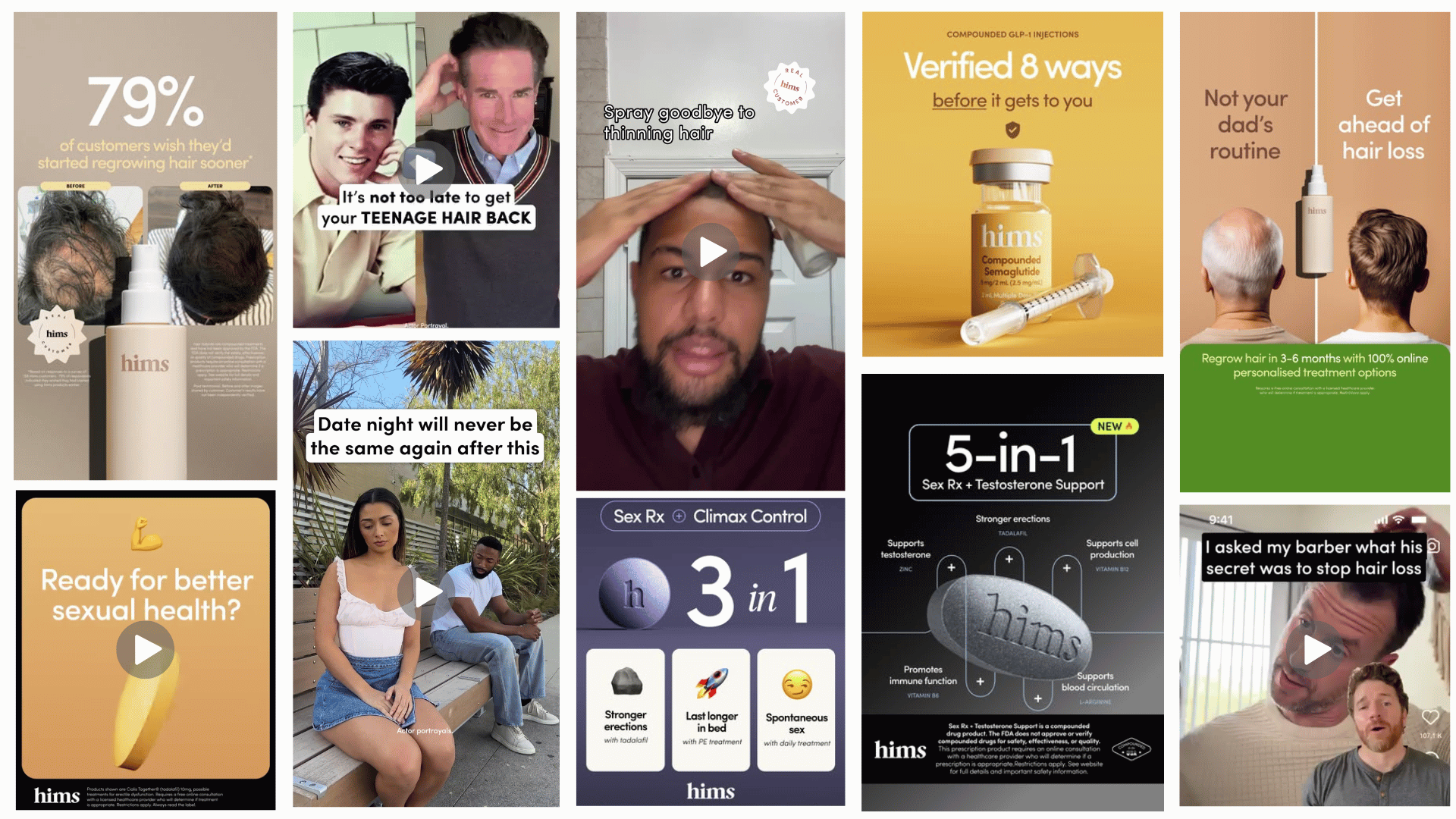
Areas of Improvement
Hims could benefit from stronger diversification across Format & Production Styles. There is a notable lack of both Carousel and Alternative Formats, two ad types that can differentiate a portfolio and boost performance. While they exhibit a strong range of Creative Themes & Concepts, there is a concentration around Educational & Explainer and Lifestyle & Aspiration ads, indicating that experimenting with different angles may unlock new audience segments.
However, there is also a simple explanation for why Hims isn’t prioritizing these formats and angles: the nature of their products and brand. Their products are pharmaceuticals that require some explaining, and distinct product lines don’t lend themselves well to carousel ads which feature multiple products. The Hims brand promises a better, healthier life which is best demonstrated through lifestyle ads, making that creative theme a natural priority.
Methodology
The analysis was conducted using Hims’ Meta Ads Library, which contained approximately 320 live ads running between December 10, 2024 and March 5, 2025. Of these, 238 unique ads were included in the Creative Map visualization; duplicates and minor iterations of the same concept were excluded to avoid redundancy. Scores were normalized to a 100-point scale to facilitate clear, comparative analysis.
Brand Analysis #2: AG1
AG1 is a supplement company promoting a healthier lifestyle through their single product—a daily drink packed with nutrients.
A performance marketing powerhouse, AG1 is one of the most well-known brands among marketers for their massive digital advertising presence.
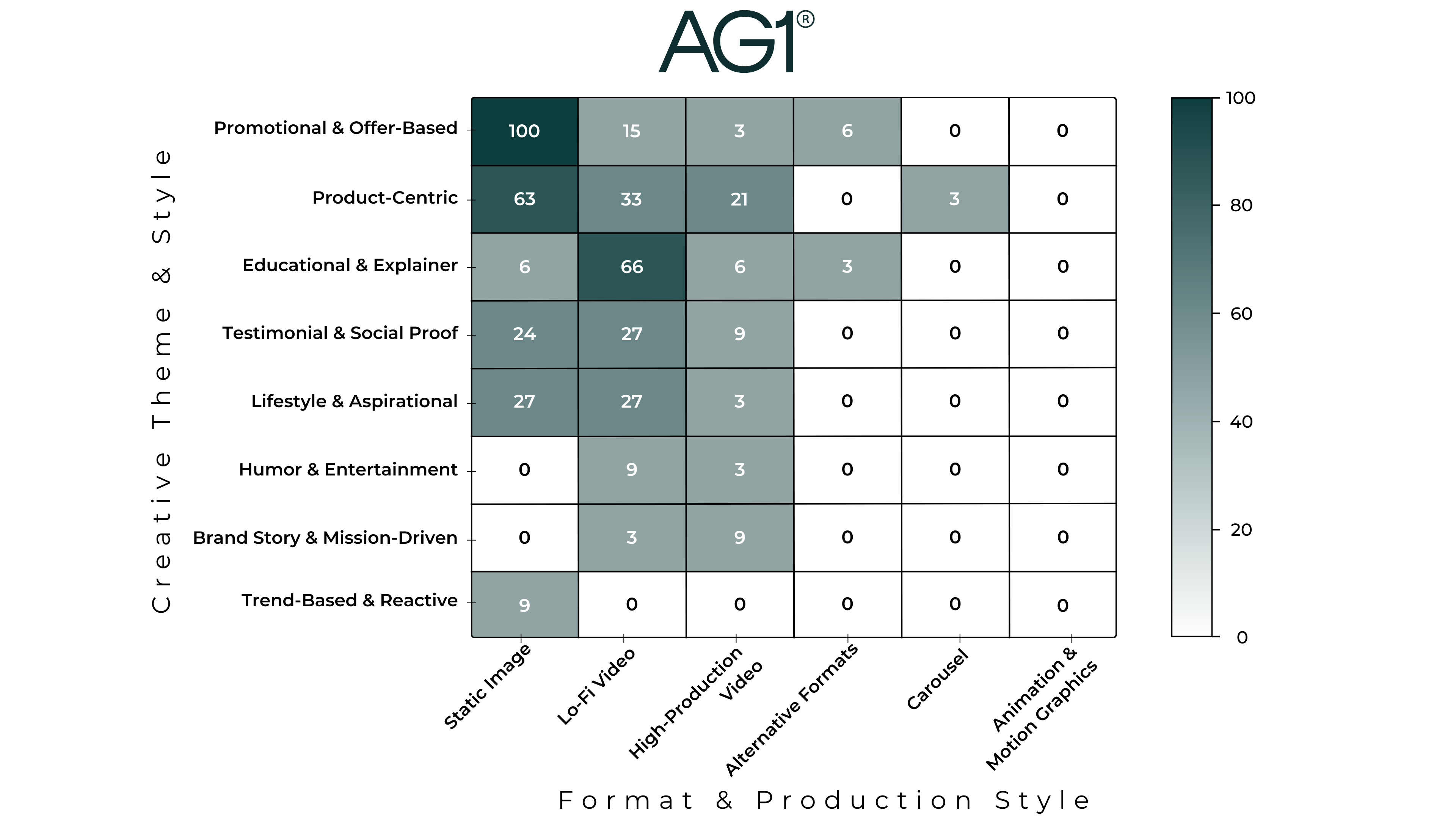
What’s Working
AG1 taps into a broad network of creators, athletes, celebrities, and paid talent to bring its health-forward, active lifestyle brand to life. Ads run from both the brand’s official account and various creator handles, adding credibility and reach across audiences.
A review of ad publish dates reveals they’re launching new creative nearly every day—suggesting a strong creative refresh cadence and an ongoing test-and-learn strategy. We see evidence of controlled variant testing, including different intro hooks and offer formats (e.g., % off vs. $ off), indicating a disciplined approach to optimizing both creative and conversion levers.
AG1’s creative library spans multiple formats and themes despite being a single-product company. Static ads are frequently used to promote their high-value welcome offer, while video ads (both lo-fi and high-production) explain product benefits and reinforce credibility through testimonials. Their creative mix balances product-centric, educational, and lifestyle-driven content, highlighting the versatility of their narrative strategy.
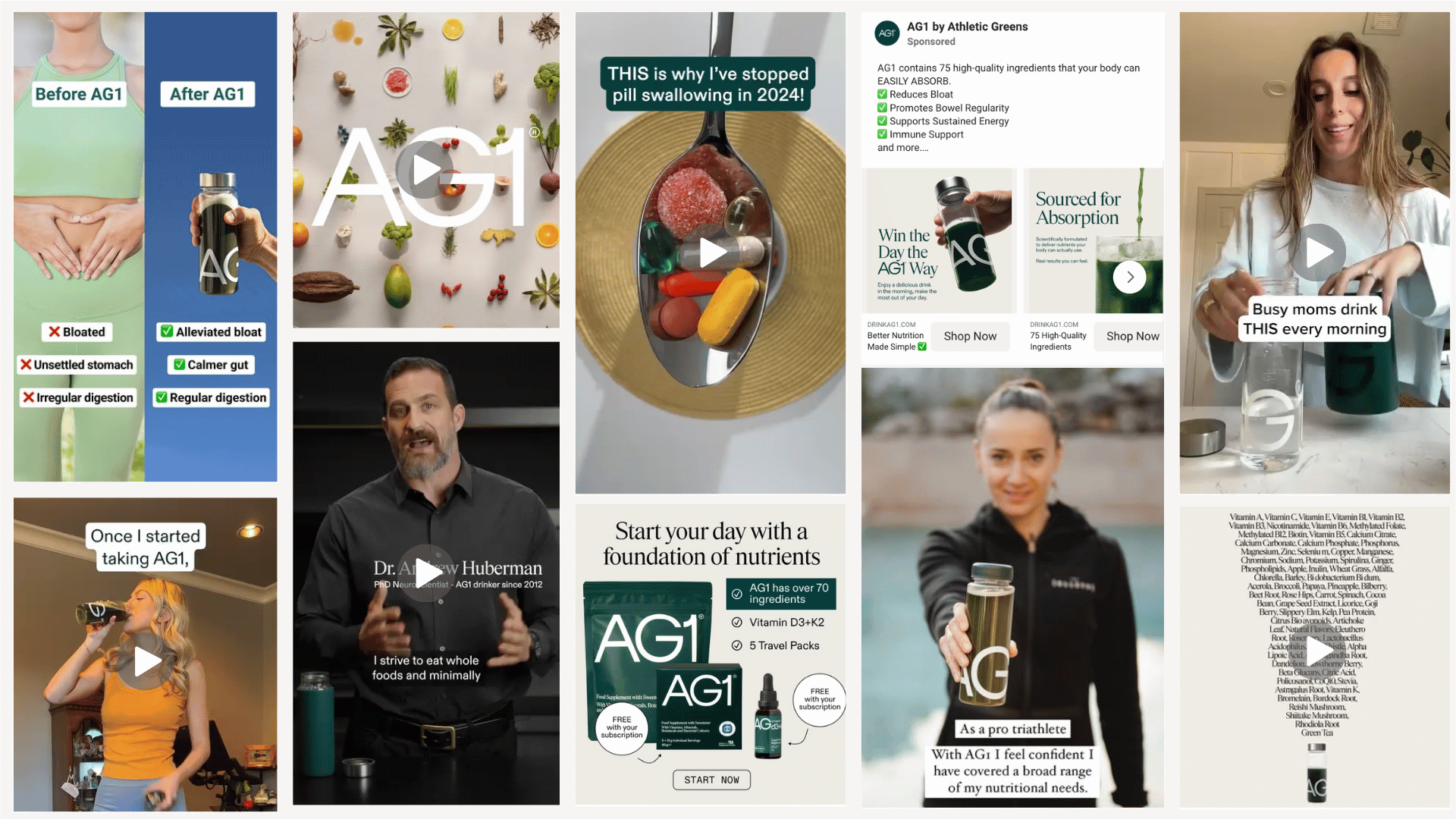
Areas of Improvement
AG1’s creative portfolio is impressive, but there are notable gaps in both theme and format diversity. Humorous, trend-based, and brand story-driven content is largely absent, missing an opportunity to connect with younger, health-conscious audiences who respond well to culturally relevant content. Similarly, the lack of mission-driven storytelling feels like a missed chance to build brand equity by sharing the “why” behind AG1—especially with a comprehensive page on their impact initiatives on their website.
There’s also room to expand format diversity. The absence of carousels, alternative formats, and motion-based assets limits experimentation and variety in the feed. Incorporating carousels, in particular, could provide a low-effort way to boost engagement and performance—whether for highlighting ingredients, bundling benefits, or stacking social proof. Broadening both creative themes and formats could unlock new audiences and performance wins.
Methodology
The AG1 analysis comprised approximately 430 live ads in Meta Ads Library running between September 11, 2024 and March 5, 2025. 157 unique ads were included in the Creative Map visualization as duplicates and iterations were excluded. Scores were normalized to a 100-point scale for clear analysis.
Brand Analysis #3: Lemonade
Lemonade is a tech-driven insurance company that offers homeowners, renters, pet, car, and life insurance.
Built on transparency and user experience, Lemonade stands out in the stuffy, legacy insurance industry with an online-first approach, modern brand, and impressive performance marketing.
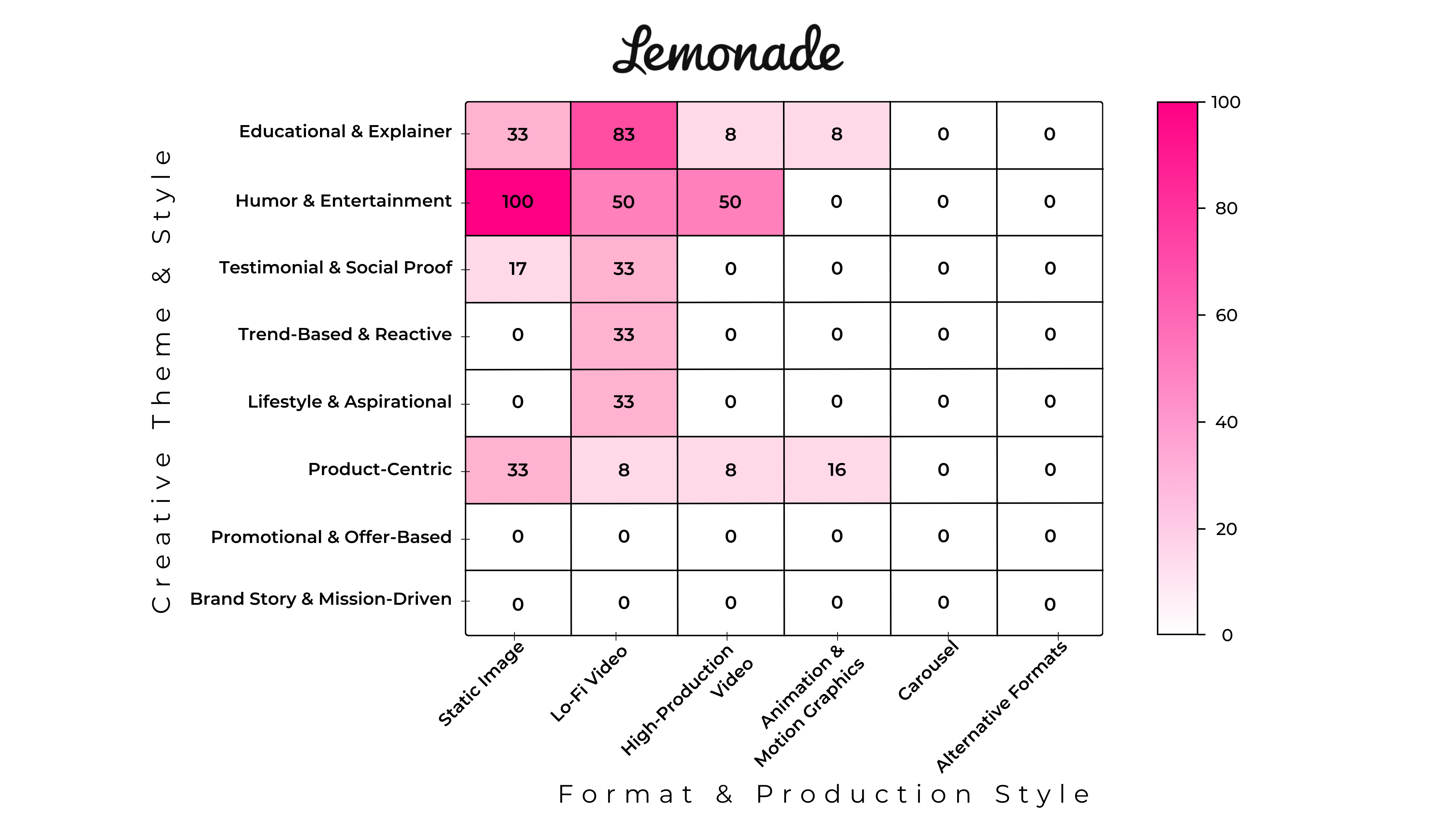
What’s Working
Lemonade stands out as a challenger brand in a traditionally rigid, highly regulated industry. Despite Meta’s strict ad policies for financial products and services, they’ve built a playful, irreverent creative identity that cuts through the noise. Their ads often leverage memes, culturally relevant references, and clever copy—proving that even insurance can be engaging and fun.
Their marketing is finely tuned to a younger demographic. Lemonade clearly understands their audience—millennials and Gen Z buying insurance for the first time—who are digital-first, skeptical of legacy brands, and highly fluent in internet culture. They meet them where they are with trend-driven, native video content, often featuring young, diverse talent in relatable, everyday scenarios.
There’s strong creative diversity across both approach and representation. Lemonade experiments freely with different visual styles, tones, and formats—from skits to testimonials to reactive memes. Their creative ecosystem reflects variety not only in concept, but in who’s featured and how the message is delivered, helping the brand stay dynamic and relevant.
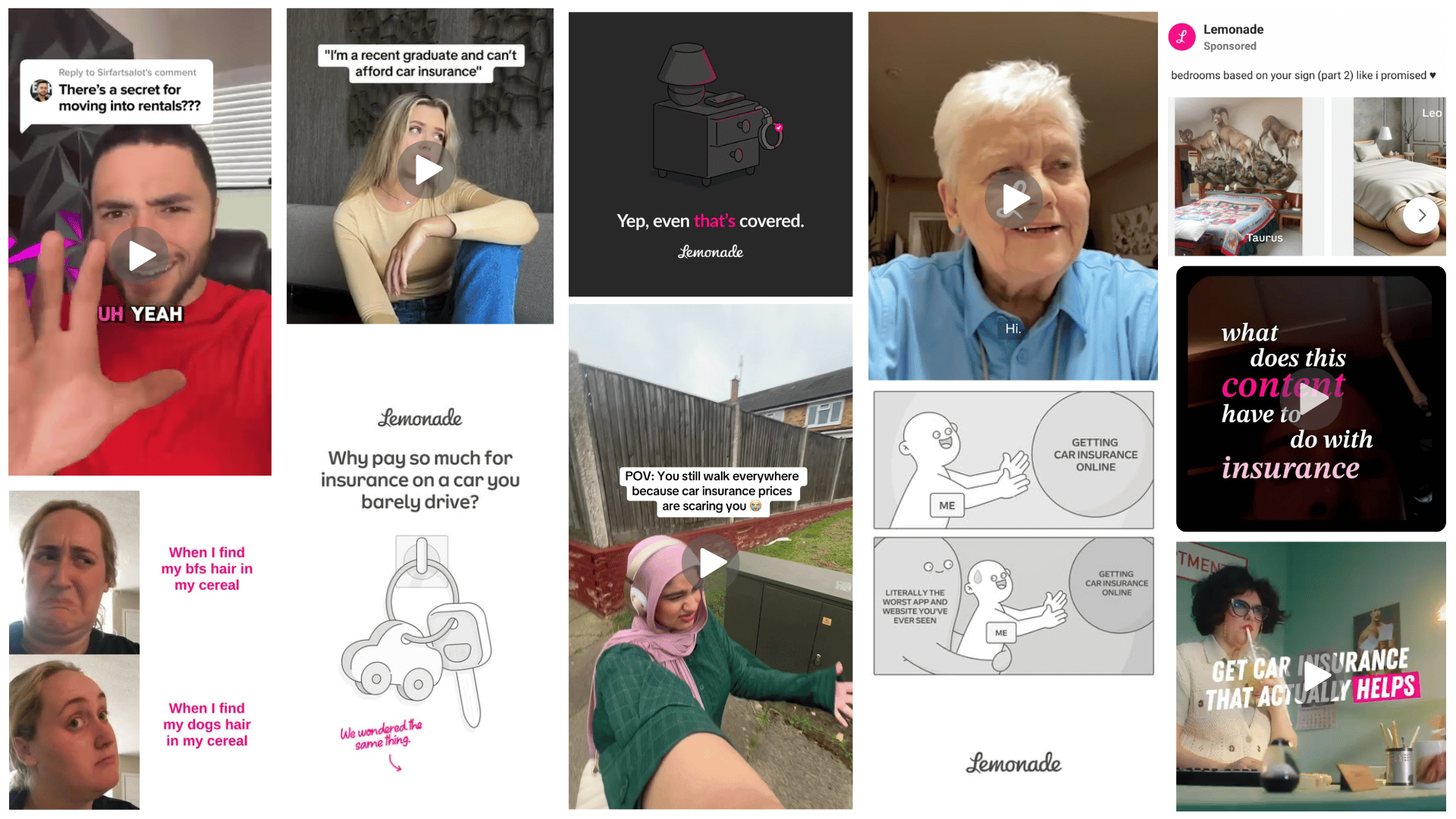
Areas of Improvement
While Lemonade excels at delivering humorous, educational content in native, trend-savvy formats, there are some clear gaps in their digital advertising strategy. Most notably, ad volume appears relatively low, limiting their ability to fully capitalize on creative diversity across formats, themes, and targeting.
Additionally, while it makes sense that they don’t lean heavily on promotional or offer-based content, the lack of brand story and mission-driven ads is a missed opportunity. Lemonade has a distinct and compelling social impact angle through its “giveback” program. Incorporating this more directly into their creative mix could strengthen emotional resonance and deepen loyalty among values-driven consumers.
Methodology
Lemonade’s Meta Ad Library consisted of approximately 140 live ads at the time of analysis, running between January 7, 2025 to March 5, 2025. 70 ads were included in the Creative Map—duplicates and iterations were excluded—and scores were normalized to a 100-point scale.
How to Make the Case For More Creative Investment
Effective performance marketing is about volume AND variety among your creative assets.
But securing more budget for ad creative development and testing—a feat only a small fraction of marketing leaders feel comfortable doing—from budget conscious CEOs and CFOs requires cold hard numbers. The kinds of numbers that marketers couldn’t produce, because they didn’t exist—until now.
Here’s a step-by-step process for building a strong case for more creative investment.
Calculate your Creative Diversity Score
If you haven’t already done so, use our nifty calculator to determine your score. This will give you a benchmark from which to compare future performance gains.
Bonus points if you scrutinize your two biggest competitors ad libraries to run their scores, too.
Request your personalized Creative Map
This will equip you with a visual snapshot of the variety of your creative strategy. You’ll understand where your strategy is oversaturated and also identify gaps to prioritize.
Request yours here. Note: We are a small team and while we will do our best, we unfortunately cannot guarantee that we can fulfill every request for a Creative Map.
Speak their language
Several quick wins should become apparent after going through the above exercises. Create a clear strategic plan to tackle both some easy wins, like repurposing stills from video ads into static ads, and long-term strategic visions, like working with more creators to produce native-style UGC content.
Prioritize low-hanging fruit
Numbers are a CFOs love language. Infuse your proposal with as many as you can find to bolster your request. Here’s some important stats, as a reminder:
- Ad performance begins to decline after 30–45 days. Regular creative refresh is essential to continued performance. (Source: Ready Set analysis of 1.5M+ ads)
- Using 3–10 ad creatives can reduce CPA by 46% compared to using just one. (Source: Meta research analysis.)
- Analysis of 15,000+ ads showed using multiple ad formats resulted in a statistically significant increase in CTR and reduction in CPA.
Plan quarterly snapshots
Bookmark this page and set a reminder to come back next quarter (and the one after that) to run your Creative Diversity Score again to gauge improvement.
Make your case
Equipped with your Creative Diversity Score, Creative Map, a clear plan of attack, and the numbers to back up why creative diversification is essential, present your findings to your CEO/CFO.
The performance marketing game is hard. Things change fast and the goalposts are always moving. But the one thing that will always be in marketers control is creative. If you prioritize creative excellence, you’ll always be two steps ahead.
Good luck.
The Bottom Line
If there’s one thing you take away from this report, let it be this…
Everyone preaches “more creative.” But more of the same won’t cut it. The real unlock is radically varied creative concepts—multiple formats, different themes, fresh talent—pushed live before anyone gets bored.
If that sounds expensive, consider the cost of stagnation: overpriced clicks, ignored ads, and zero growth.
So stop treading water with safe, cookie-cutter concepts. Step up, shake things up, and let creative diversity be a key driver of your performance. Because the biggest risk now is playing it safe.
Get Your Own Heat map
Maximizing creative diversity begins with knowing where you stand. Instantly identify gaps in your creative strategy with a custom Creative Map.
